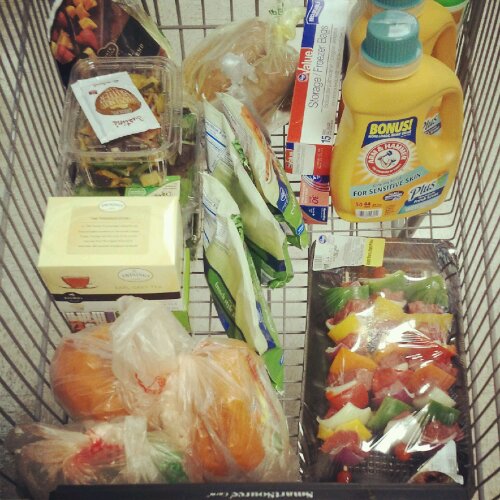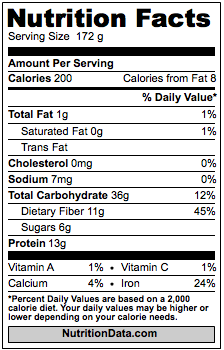 This is a shot of my grocery cart earlier this week.
This is a shot of my grocery cart earlier this week.
This view has come a long way. My cart once was full of bread, ice cream, frozen pizza (still an occasional purchase for Tommy), frozen all-in-one meals, cereal boxes (and boxes!), milk, lots of cheese, and more.
Improving our diet (and lifestyle) has been a slow but steady progress. Here are some of the small changes we've made over the past few years:
- Replacing all white flour foods with wheat options
- Replacing bread with tortilla wraps
- Choosing fruit as dessert versus baked goods (of course baked goods are always a fun treat on occasion!)
- Shopping in the outside aisles of the grocery store, with the exception of wandering up and down the Natural Foods aisles
- Swapping spices for sauces (or marinades) on meats (I made this change as soon as I realized how many marinades out there are made with sugar and/or high fructose corn syrup)
- Avoiding pasta
- If we do have pasta during a meal, it is a side dish instead of a main dish and made with whole grain pasta
- Avoiding casseroles and creamy soups/sauces
- Regularly reading and educating ourselves about nutrition
- Choosing to go on a hike instead of to the movie theater
- Along the same idea, going on a long walk instead of renting a DVD
- Replacing unhealthy instant lunches with protein-packed green smoothies
- Learning to LOVE sweet potatoes!
- Replacing all processed sugar/syrups with one of the following: 100% pure maple syrup, liquid stevia and/or honey
- Replacing vegetable/canola/corn oil with coconut oil or applesauce in baked good recipes
- I'm currently working on teaching myself to drink coffee black... but it's a long process. ;)
- Using exclusively coconut oil or olive oil
I am a fan of doing things slow and steady. Instead of an overnight change that may fail quickly, we're tackling this issue in our lives one small step at a time. Every now and then I look up and realize... we've come a long way. And earlier this week I stopped to capture one of those moments with my camera phone. :)
Here's to the journey! We still have so much to learn.

 Step 1: Go get a product from your pantry or fridge and flip to the nutrition facts label. Seriously, go get one. It will help you learn and remember this process so you can use it when you are away from the computer. :)
Step 1: Go get a product from your pantry or fridge and flip to the nutrition facts label. Seriously, go get one. It will help you learn and remember this process so you can use it when you are away from the computer. :)